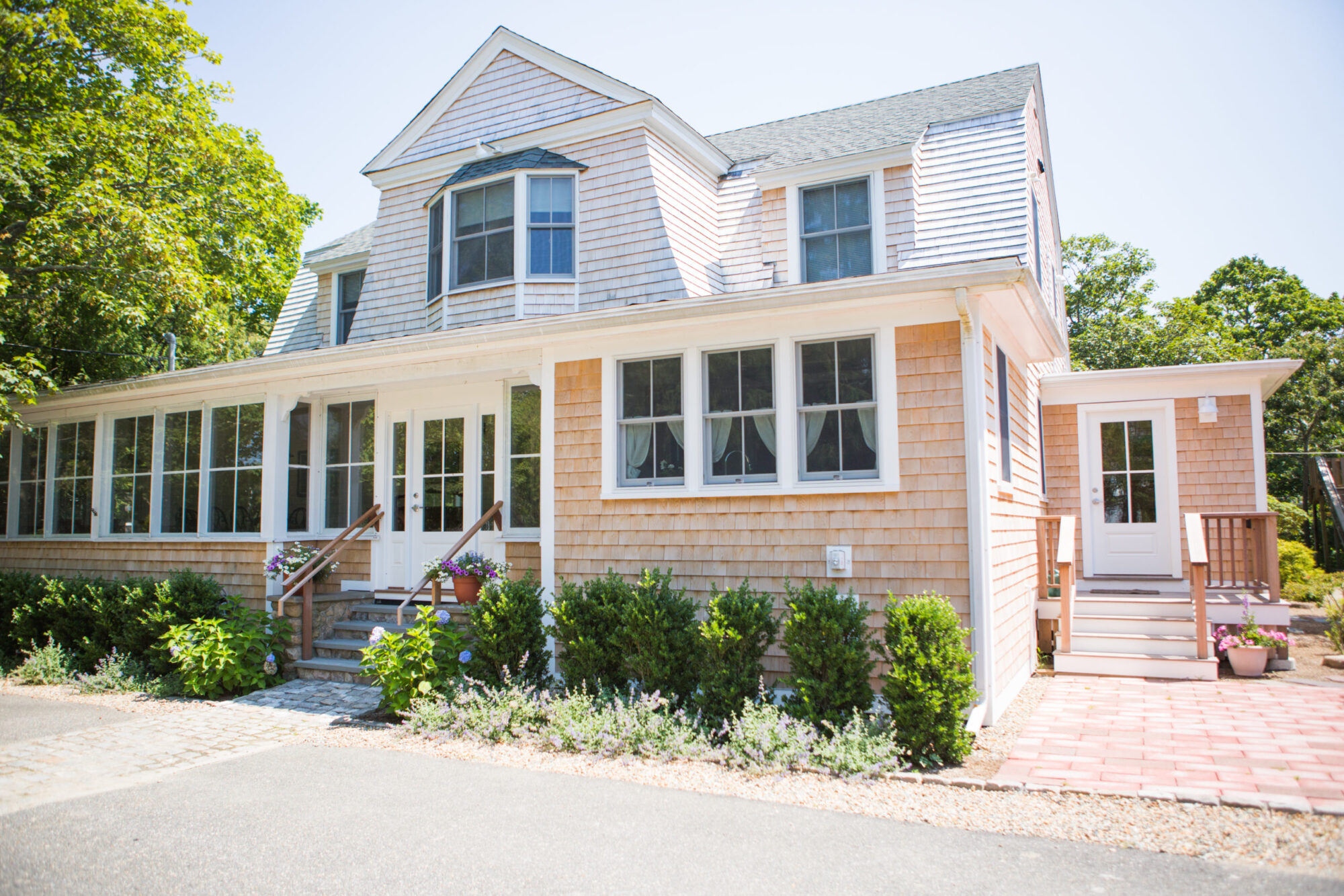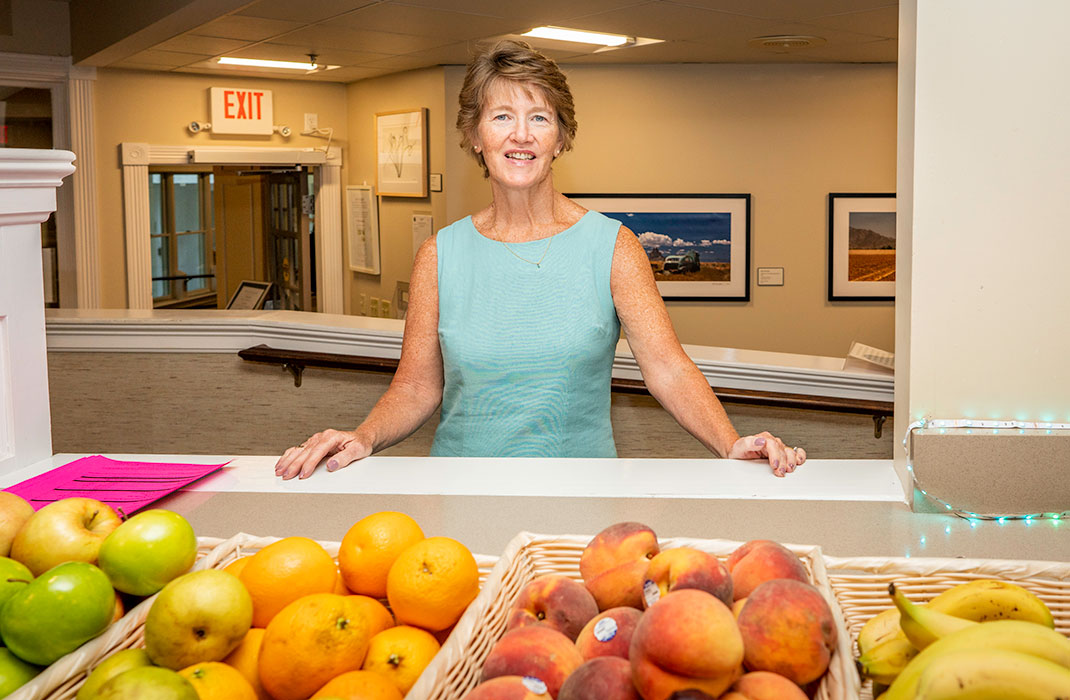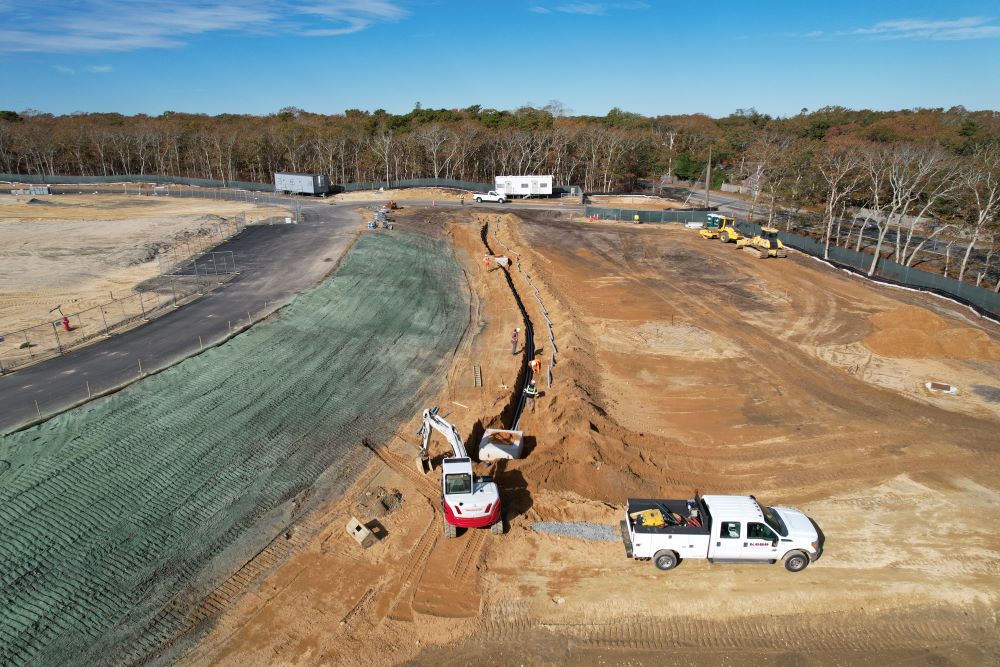In January, Martha’s Vineyard Hospital thought it had some prime candidates for its job openings. They made offers to potential employees and 19 candidates turned them down.
“The single reason? The housing costs. The housing situation. That’s huge for us,” hospital CEO Denise Schepici told The Times. “Two of them were physicians. If anyone can afford it, it’s the docs, right? They said, ‘Denise, this is untenable.’”
At present, as the summer season quickly approaches, about a quarter of the hospital’s 400 jobs are vacant.
The hospital spends upwards of $3 million per year on housing for employees. And for those who are willing to commute to the Island, the hospital pays for their ferry passes and parking, doing anything and everything to create a stable workforce. It’s getting harder by the day.
Not only is the housing situation making it difficult to attract qualified candidates. It’s making it difficult to retain staff.
“I can see her face right now. She’s leaving in April. They’re just tired of the shuffle,” Schepici said. “She said, ‘We just can’t do this anymore.’ It’s heartbreaking. These are people we’ve come to know and love. They’re leaving the Island because they’ve had it. They’ve had it with the escalating costs. It’s not sustainable.”
In recent weeks, the hospital has been running advertisements in The Times seeking year-round rentals for staff. The hospital has also been supportive of the Coalition to Create the Martha’s Vineyard Housing Bank, which will go before town voters in all six towns this spring, and its parent company Mass. General Brigham has openly lobbied for transfer fee bills that are before the state legislature to provide funding for a housing bank on the Island and elsewhere.
“We are at a crisis. The hospital is the largest employer on the Island. We touch the lives of everyone. My vision and goal is to bring the best we can bring to the Island so Islanders don’t have to leave the Island for basic services. Well, with those services come people who need to perform them — highly trained professionals, doctors and technicians and housekeepers and all the things that make our hospital perform,” Shepici said. “When you have workers who make a median salary of $80,000 per year — and that’s the median — it’s still higher than the area median salary of $60,000 per year — who could afford a $1.3 million median house price? Then you have the issue of inventory declining — there are are even less rentals if you can even find one and the prices just continue to go up. My vision for employee engagement has been about stability. Creating a stable, highly reliable workforce bringing in new nurses to replace nurses who are retiring. Making sure we have the sustainability of this hospital in the way we’ve come to enjoy. Without the housing piece, I don’t think people really realize. Without housing, healthcare is going to change.”
The inability to attract full-time staff makes the hospital reliant on so-called “travelers,” particularly in the summer months. Those are doctors, CNAs, and registered nurses who work for agencies. The travelers cost as much as $200 per hour and the hospital has to find a place for those people to stay. “It’s really exorbitant,” Schepici said.
She’d rather hire full-time employees and create a stable staff, but it comes full circle to the lack of housing.
“It’s gone up precipitously,” Schepici said of how much the hospital pays for staff housing. “When I first got here it was $2 million annually and then it dipped a little bit when COVID came about because people weren’t going anywhere, but now with the costs per bedroom going up we’re spending just under $3 million right now. That’s less bedrooms for that money so the cost per unit is going up just exponentially. That’s money we could put toward direct patient care. This is something we have to do or we’re not going to have healthcare workers.”
Pandemic pause
The COVID-19 pandemic has exacerbated the housing situation on the Island. People with second homes on the Island have turned them into primary residences. Others have scooped up available housing and driven costs up.
Meanwhile, the hospital played a key role in keeping Islanders safe during the pandemic — now going into its third year but showing signs of easing.
“I cannot say enough about the women and men at the hospital who worked tirelessly to care for our community during the pandemic — 24/7 – on all the time,” Schepici said. “All of us at the hospital were very sad when we reported we lost a member of our Island community to COVID. This has been a very tough time for all of us — going on three years now. But I am most proud of our team because they were there when our community needed them most — for care, for vaccinations, for testing, all while keeping up the day-to-day care our community needed and still needs. We had our challenges, but what we really had and still have is a fighting spirit. I will be forever grateful to everyone.”
The mantra was the same throughout, Schepici said. “How do we keep the Island and our caregivers safe?”
With the exception of a surge in cases in January driven by the omicron variant, Island numbers have been low and the severity of infections has been relatively minor compared to other parts of the country.
“It’s been pretty remarkable as you look back on the work of the hospital, our health agents, our first responders and other providers in sharing that common vision and goal,” Shepici said. “Being in this together was very powerful and impactful. What it showed me is that when we work together — as a community — we will care for one another, and we will help each other in a time of need. That generosity of spirit was the silver lining if there can be one in a pandemic.”
Schepici said she is hopeful that with cases down, mask policies lifted, and the bulk of the population vaccinated against COVID that the pandemic will soon be in the rearview mirror.
Looking to the future
In February, Martha’s Vineyard Hospital was recognized as a Top 100 Critical Access Hospital and received a 5-star patient experience rating from the Centers for Medicare and Medicaid Services (CMS). The hospital was rated on eight areas including quality, patient perspective, and financial efficiency, according to a press release.
The five-star rating was based on “nurse communication, staff responsiveness, and overall hospital rating,” according to the release.
“This is an extraordinary achievement for the hospital. All our employees work tirelessly every day to provide excellent patient care, and I’m happy that our teams are being recognized,” Shepici said in the release. “I’m so proud to work amongst such dedicated and compassionate professionals who truly put patients at the forefront of everything they do.”
While that recognition is appreciated, Schepici told The Times she is looking forward to implementing her strategic plan for the hospital, which includes bringing more clinical care closer to home, transforming nursing care, replacing the hospital’s aging facilities, and providing more workforce housing.
“Even during COVID, we pressed ahead with new programs and in fact launched many new services during the last 18 months to prevent patients from having to leave the Island to receive care,” Shepici said. Among the new programs are; full-time cardiology, podiatry, urology, neurology, vascular, pulmonary, and pediatric psych services, she said. The hospital also has more primary care doctors, social work expansion, and full-time psychiatry.
“We also continued with great determination on advancing a transformational plan for the care of elders on-Island to replace Windemere and have been working our way through a complex set of regulatory and town approval processes to hopefully make this a reality and along with that a workforce housing plan,” she said.
That hospital purchased 26 acres on Edgartown-Vineyard Haven Road in 2021 and hopes to build a combination of housing for elderly with skilled nursing care available, as well as workforce housing. The hospital is working with Navigator Elder Homes New England to create sustainable, transformative elder care for its dozens of residents through a concept called Green House homes.
“There’s a solution there, but it’s a slow slog to try to get it through the permitting process,” Schepici said.
The idea is to replace Windemere Nursing and Rehabilitation on the hospital campus and eventually use that building to provide other hospital services, Schepici said. “We need more clinical space,” she said. “With the population growing 24 percent in the last decade. I need more help here. I need more primary care doctors.”
She said other buildings on the campus also need to be updated to provide better ambulatory care, which is another way to say outpatient care. “We’re working hard to make it come to reality,” Shepici said. It’s no longer possible to retrofit the older buildings because there are leaking roofs and other problems. “We’re throwing good money at bad buildings. It’s time to refurbish and get new buildings going,” she said.










